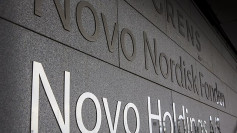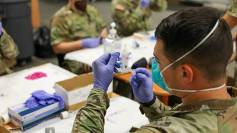Art enthusiasts can now view all of the treasures of the Louvre museum without having to fly to Paris.
The Louvre has made its entire art collection available online, the museum announced Friday, with over 480,000 pieces of art available for free viewing at any time.
"Today, the Louvre is dusting off its treasures, even the least-known," President-Director of the Musée du Louvre, Jean-Luc Martinez, said in a press release.
"For the first time, anyone can access the entire collection of works from a computer or smartphone for free, whether they are on display in the museum, on loan, even long-term, or in storage. The Louvre's stunning cultural heritage is all now just a click away!"
The world's most visited museum has created a new database at collections.louvre.fr as part of a significant revamp of its online presence, with more than three-quarters already labeled with information and images.
It comes after a year of pandemic-related closures, which has resulted in an increase in traffic to the Louvre's main website, louvre.fr, which has also been given a major makeover.
The most famous works of art in the museum, such as "Winged Victory," "Venus de Milo," and, of course, the "Mona Lisa," are viewable online, along with thousands of other items including paintings, sculpture, jewelry, furniture, textiles, and historical objects.
The new database contains not only objects on public display in the museum, but also those in storage, including at the museum's new state-of-the-art facility in Lievin, France.
The platform also includes the Delacroix museum, which is operated by the Louvre, as well as sculptures from the Tuileries gardens and works recovered from Germany after the war's end in 1945 and waiting to be returned to the families from which they were looted.
The Louvre closed to visitors at the start of the pandemic and reopened briefly this summer with new COVID-19 precautions. Owing to the Paris lockdown, the museum is currently closed to visitors and is undergoing upgrades including installing new security systems, cleaning sculptures, and reorganizing entrances.






